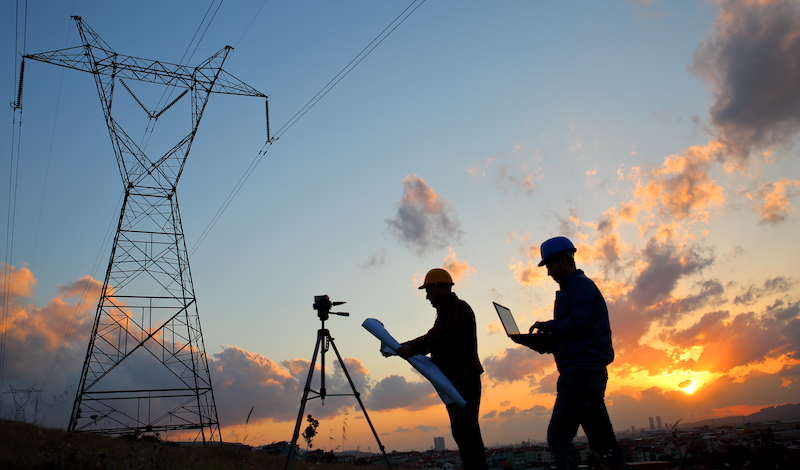
Scholar argues for changes to siting regulations to speed up renewable energy deployment.
The results of a little-discussed referendum in Maine in early November 2021 offered a dire warning for the future of clean energy in the United States. Voters in Maine overwhelmingly rejected the construction of a transmission line that would bring clean, renewable energy from Canada to New England.
As the United States enters a “critical decade” in the fight against climate change, the need for rapid renewable energy deployment requires reassessing existing laws governing electricity generation and transmission projects, argues Uma Outka in a recent article. Siting laws and regulations govern where energy infrastructure can be located. Outka, a professor at the University of Kansas School of Law, contends that siting failures, such as the Maine transmission line, show the need for reforms that “anticipate the challenges” in siting renewable energy projects.
Outka explains that although siting processes have undergone improvements, such as greater collaboration between developers, conservationists, and government agencies, the processes often remain “unpredictable.” She pinpoints the “varied patchwork” of state and local siting laws and regulations as one major obstacle facing the deployment of renewable energy. She also predicts that “not in my backyard” or “NIMBY” sentiments—on display recently in Maine—will continue to be another major obstacle to renewable energy infrastructure.
To address these two interrelated problems—a patchwork of laws combined with NIMBYism—Outka identifies three “key areas of priority” for reforming siting to encourage renewable energy development.
First, she recognizes the need to reexamine state and local government responsibilities in siting on privately owned land.
As the primary regulators of land use, state and local governments wield a significant amount of power over siting decisions. Given the multiple actors and overlapping jurisdictions, however, the existing siting framework also creates a “highly variable” and fragmented regulatory environment. This variability often hampers new renewable developments by encouraging NIMBY advocates to veto renewable energy development and by creating regulatory complexity for developers. Unfortunately, as Outka asserts, not much has changed over the past decade.
Despite the challenges posed by disjointed siting authority, New York undertook a successful reform effort in 2020. The state passed a new law that made several significant reforms to the siting regime. For example, the law strengthened the state’s ability to override municipal laws and regulations when those laws are found to be “unreasonably burdensome.” Furthermore, New York added new siting permit elements that require the identification of “host community benefits,” such as discounts on utility bills that result from new projects, Outka notes. She sees New York’s reforms as a model for how states can address fragmented siting authority and NIMBY sentiments. Outka concedes that political constraints may keep some states from reforming their siting laws as New York has done, but that all states can at least provide skeptical local communities with information about the benefits of renewable energy projects.
Second, Outka recognizes the need to speed up siting processes for renewables on federally owned public lands.
Although “approvals have been slow,” according to Outka, a clear foundation for faster federal siting processes exists. For example, the Bureau of Land Management’s solar and wind energy rule under the Obama Administration encourages renewable projects through faster approval processes and development incentives. Despite the underenforcement of the solar and wind energy rule during the Trump Administration, Outka urges the Biden Administration to “reinvigorate” this rule and other renewable policies that went ignored during the Trump Administration.
In the offshore wind context, for example, where energy transmission infrastructure must be built in both federal and state waters, Outka advocates stronger cooperation between state and federal agencies. As one of the primary ways to improve offshore wind siting, Outka pushes for states and the federal government to follow conservationists’ guidance on “sensitive habitats” and reducing harmful encounters with wildlife.
Finally, Outka discusses how renewable energy innovations, such as projects that combine energy generation and storage, present new kinds of siting problems that need to be addressed. She encourages altering siting regulations to avoid delays associated with novel projects.
For example, Outka explains how a state regulatory board in Massachusetts delayed approval for a storage project due to a dispute over whether the facility should be categorized as “generation” or “transmission.”
Outka also argues that storage projects, such as pumped storage hydropower, create additional siting reform needs. In the case of pumped storage, which generates energy from running water between reservoirs at different elevations, the Federal Energy Regulatory Commission maintains national control over siting approvals. As a result, Outka suggests the Commission create “consistent approaches to resolving environmental issues” when siting pumped storage projects.
Outka concludes by reemphasizing the crucial role that siting plays in renewable energy development, especially for the coming decade. She asserts that siting reforms will catalyze the renewable energy transition in the battle against climate change.



